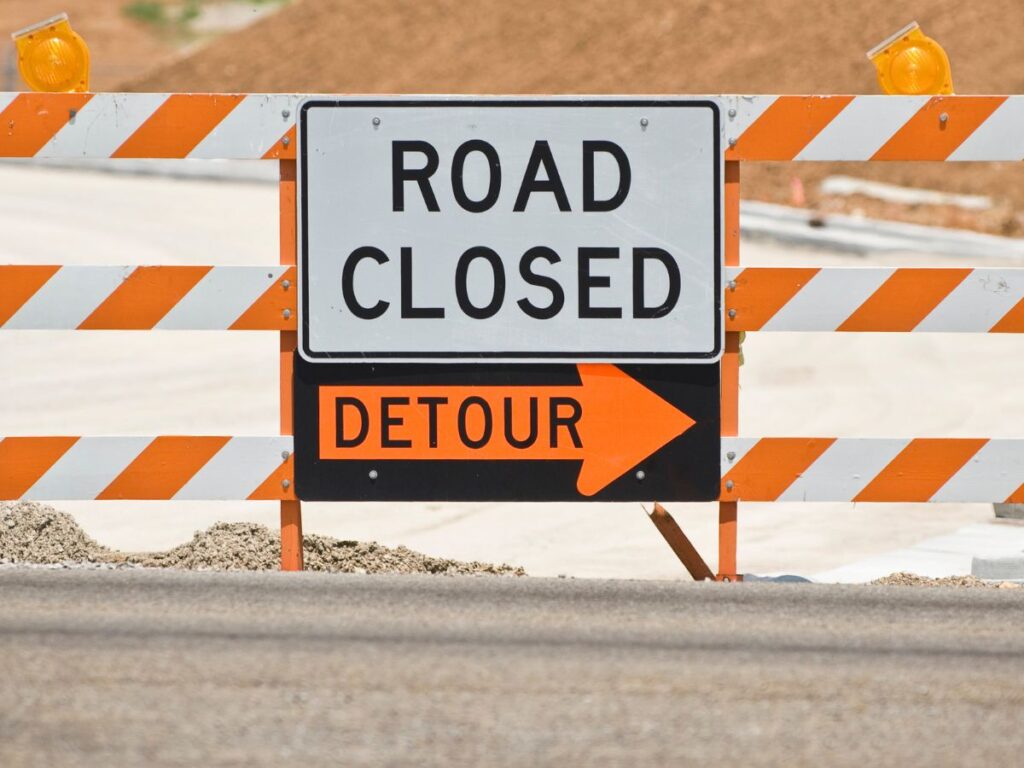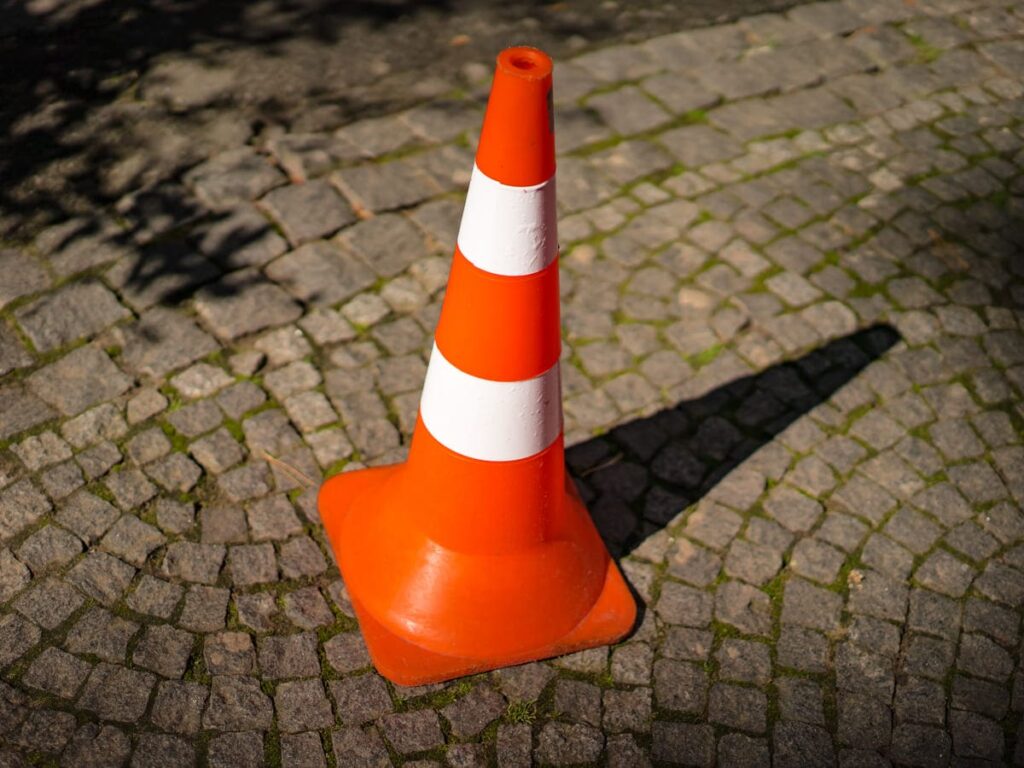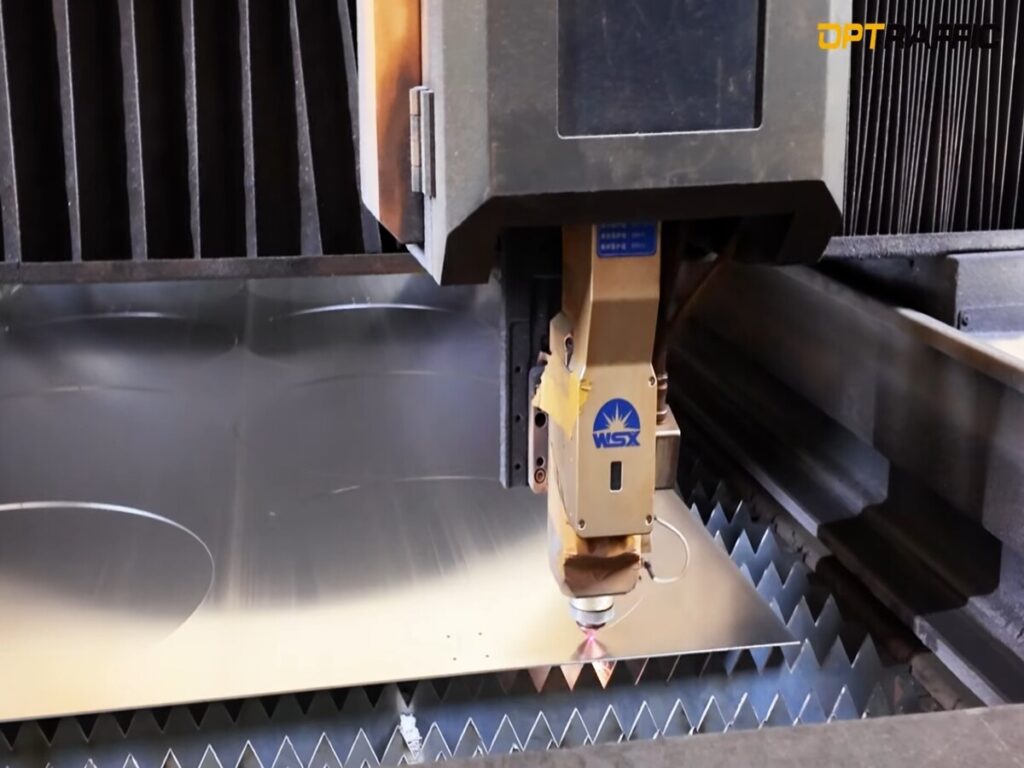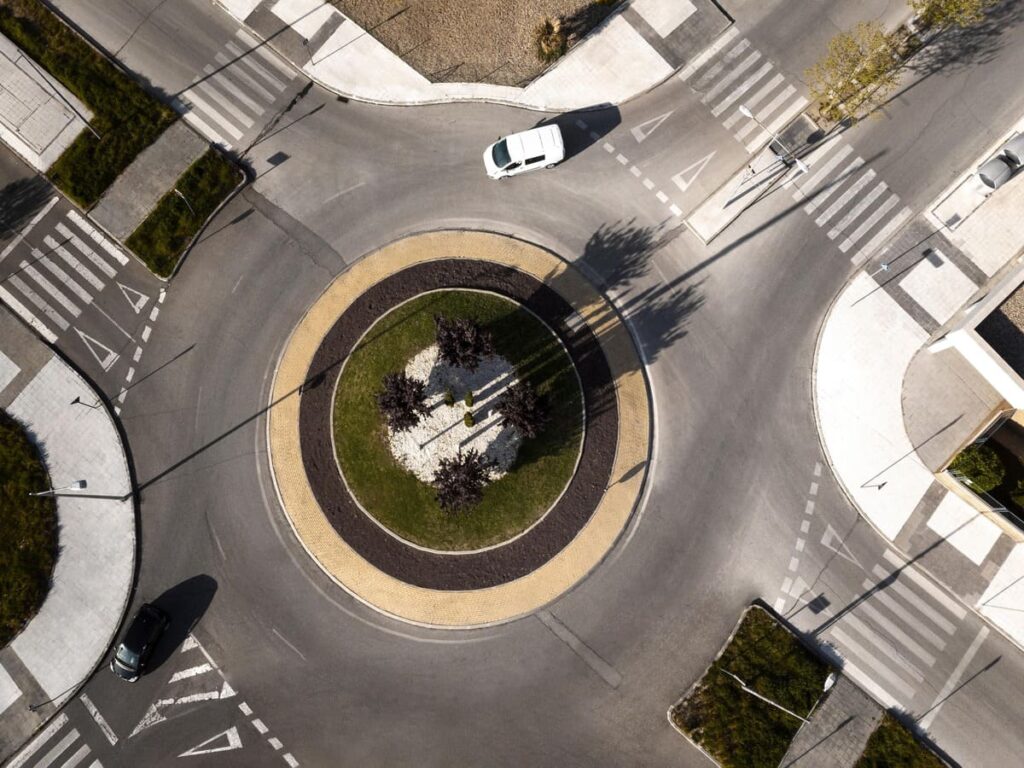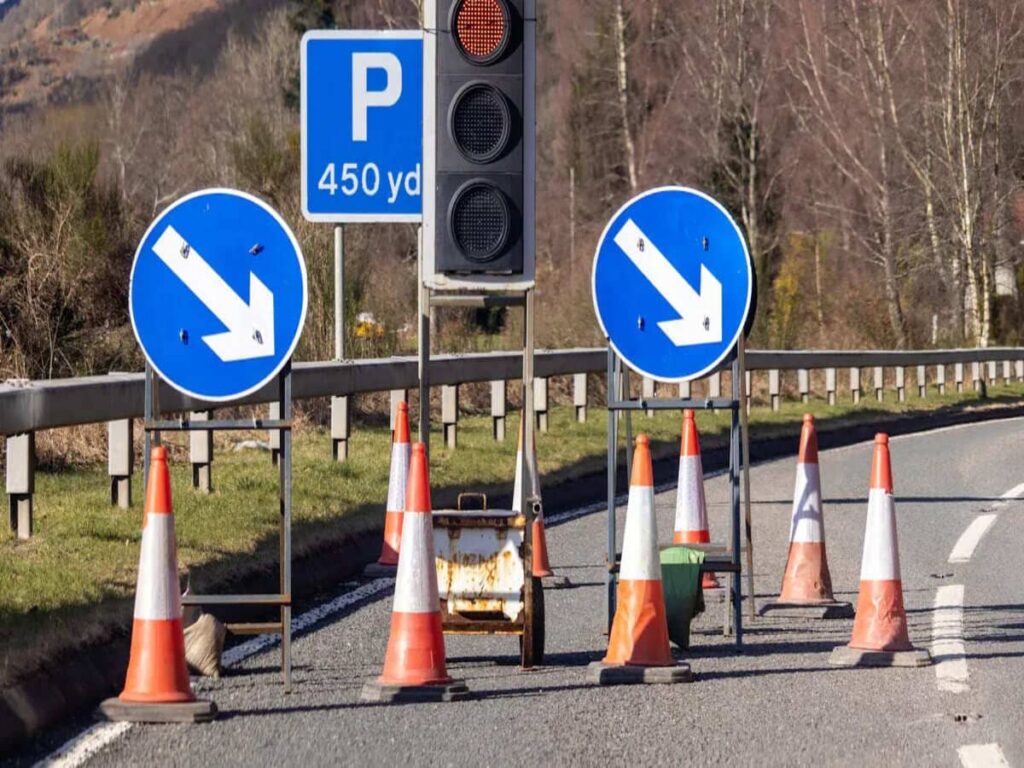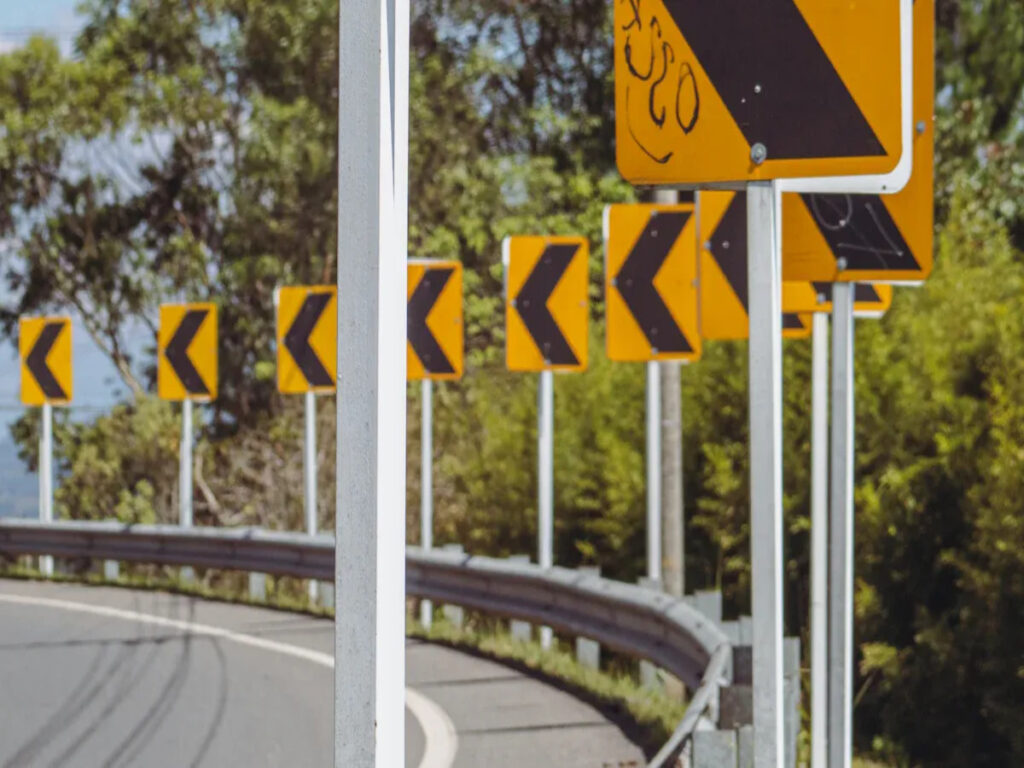
تحتاج الطرق السريعة إلى علامات حركة الألمنيوم التي هي 0.100 ل 0.125 بوصة سميكة. عادة ما تستخدم الطرق الحضرية لوحات 0.080 بوصة سميكة. السُمك المناسب يساعد العلامات على البقاء قويًا وسهل رؤيته. كما أنه يقلل من مقدار الإصلاح الذي يحتاجونه بمرور الوقت. الألمنيوم المتميز مع الطلاء الخاص يجعل العلامات تدوم حتى 20 سنين. هذا يعني أن الناس لا يضطرون إلى إصلاحهم كثيرًا. مخططي المرور, المقاولين البلديين, المهندسين المدنيين, ويستخدم محترفي السلامة على الطرق هذه القواعد. إنهم يريدون علامات تدوم طويلًا ولكن لا تكلف الكثير.
في أوبترافيك, نحن نقدم جودة عالية علامات الألومنيوم بسمك مثالي لاحتياجاتك. تم تصميم علامات المرور المتينة والطويلة الأمد لتلبية معايير السلامة والوقوف على العناصر, ضمان بقاء مشاريع الطريق الخاصة بك على المسار الصحيح وداخل الميزانية.
الوجبات الرئيسية
- تحتاج الطرق السريعة إلى علامات الألمنيوم السميكة. هم عادة 0.125 بوصة سميكة. هذه العلامات تقف أمام الريح والطقس. كما أنها تتعامل مع حركة المرور الكثيفة. هذا يساعد على الحفاظ على سلامة الناس لفترة طويلة.
- تستخدم الطرق الحضرية علامات 0.080 ل 0.100 بوصة سميكة. هذه العلامات قوية ولكن تكلفة أقل. إنها تعمل بشكل جيد لحركة المرور المتوسطة وعلامات أصغر.
- تدوم علامات أكثر سمكا لفترة أطول. يبقون مسطحين في الطقس السيئ. هذا يجعلهم أسهل في الرؤية. هذا يعني أيضًا أنه ليس عليك استبدالها كثيرًا.
- تحقق دائمًا من القواعد المحلية قبل اختيار سمك الإشارة. هذا يساعدك على تجنب الغرامات. كما أنه يبقي الجميع آمنين.
- فكر في حجم الإشارة والرياح عند اختيار السماكة. أيضًا, انظر إلى كيفية تثبيت العلامة. هذا يساعدك على اختيار أفضل سمك لكل مكان.
سمك موصى به
الطرق السريعة
تحتاج الطرق السريعة إلى علامات مرورية قوية جدًا. ال وزارة النقل يقول يجب أن تكون العلامات 0.125 بوصة سميكة. يساعد هذا السمك علامات على الوقوف على الرياح القوية والسيارات السريعة. كما أنه يحميهم من الطقس السيئ. تستخدم دول مثل جورجيا ونيويورك هذه القاعدة للحفاظ على أمان الطرق. العلامات الأكثر سمكا لا تنحني أو تحريف بسهولة. هذا مهم للعلامات الكبيرة في أماكن مفتوحة.
نصيحة: إذا كان هناك الكثير من الشاحنات أو العواصف, اختر دائمًا سمك 0.125 بوصة. هذا يجعل العلامات تدوم لفترة أطول.
| سمك الألومنيوم | حالة الاستخدام النموذجية | مستوى التوصية نقطة |
|---|---|---|
| 0.080-بوصة | الشوارع السكنية, مواقف السيارات | يلبي متطلبات DOT الأساسية |
| 0.100-بوصة | الطرق الحضرية مع حركة مرور معتدلة | مناسبة للمتانة |
| 0.125-بوصة | الطرق السريعة, مناطق حركة المرور الكثيفة | معيار متوافق تمامًا مع DOT |
الطرق الحضرية
الطرق الحضرية لها احتياجات مختلفة. هذه الطرق تحصل على حركة مرور متوسطة. يجب أن تكون العلامات هنا قوية ولكنها ليست مكلفة للغاية. في الولايات المتحدة, 0.080-يتم استخدام الألمنيوم بوصة أكثر لعلامات اسم الشارع. هذا السماكة تبقي العلامات قاسية وصعبة في المدن. كما أنه يساعد المدن على توفير المال. تستخدم معظم علامات المدن أغطية عاكسة عالية الكثافة. هذا يساعد السائقين على رؤيتهم بشكل أفضل.
يختار المخططون الحضريون أحيانًا سمك 0.100 بوصة للزوايا المزدحمة أو العلامات الكبيرة. هذا يعطي المزيد من القوة دون جعل العلامات ثقيلة أو باهظة الثمن.
مناطق البناء
تحتاج مناطق البناء إلى علامات يمكن أن تتغير حسب الحاجة. وزارة النقل في ولاية أيوا يقول لاستخدام سمك 0.080 بوصة للتسجيلات حتى 36 بوصة طويلة. يجب أن تكون العلامات الأكبر 0.125 بوصة سميكة. تتطابق هذه القواعد مع ما تريده الحكومات الفيدرالية وحكومات الولايات لعلامات منطقة العمل.
يعتمد السماكة الصحيحة على المدة التي ستبقى فيها العلامة مستيقظًا ومقدار حركة المرور. وظائف قصيرة تستخدم لوحات 0.080 بوصة. وظائف طويلة أو البقع المحفوفة بالمخاطر تستخدم لوحات 0.125 بوصة. أحيانا, هذه العلامات لها حواف قوية. يجب أن تتعامل مناطق العمل في العمل من الشاحنات وتغيير الطقس.
ملحوظة: إذا استمرت وظيفة البناء لفترة طويلة أو كانت بالقرب من الطرق السريعة, استخدم دائمًا أكثر سمكا, علامات حركة الألمنيوم أقوى. هذا يبقي الناس آمنين ويعني أنه ليس عليك استبدال العلامات في كثير من الأحيان.
لماذا السماكة مهمة
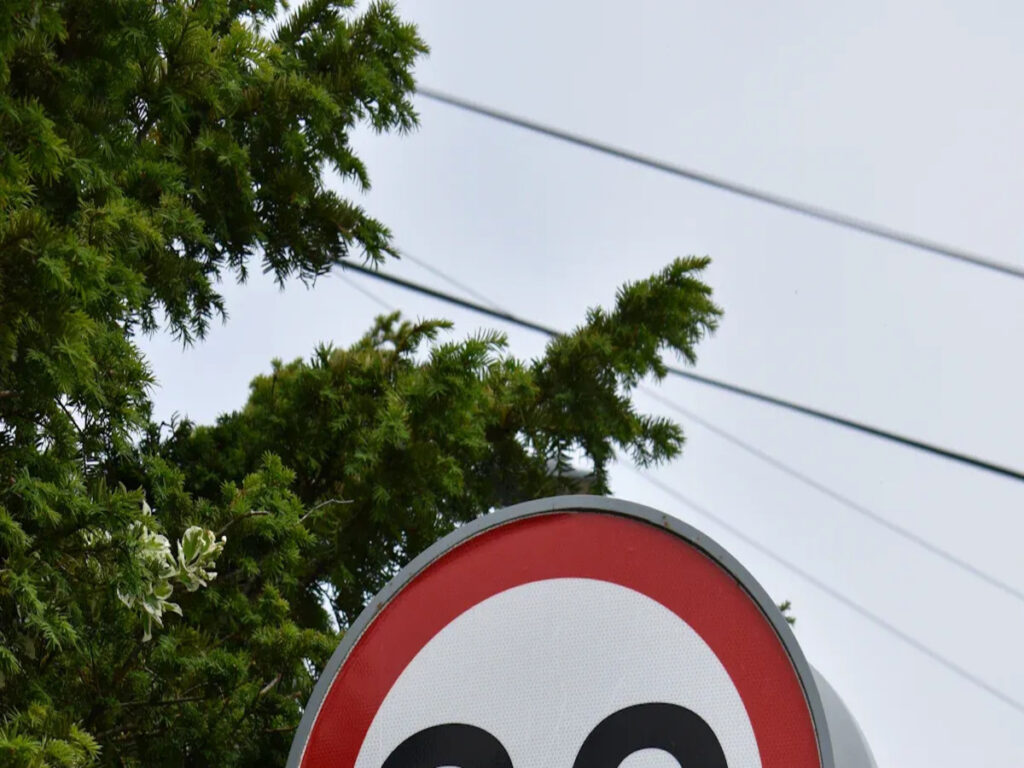
السلامة والوضوح
العلامات الأكثر سمكا مهمة للسلامة على الطرق. يحتاج السائقون بسرعة إلى رؤية العلامات بوضوح. علامات رقيقة يمكن أن تنحني في الرياح القوية. هذا يجعلهم من الصعب القراءة. تظل الألواح الأكثر سمكًا مسطحة في الطقس السيئ. هذا يساعد السائقين على رؤية التحذيرات والاتجاهات بسرعة. يوضح الجدول أدناه كيف تساعد السماكة على السلامة لأحجام الإشارة المختلفة والاستخدامات:
| حجم الإشارة (بوصة/أقدام) | سماكة الألومنيوم الموصى بها (بوصة) | تأثير السلامة والأداء |
|---|---|---|
| علامات صغيرة (على سبيل المثال, 18″ × 24″) | 0.040 | سمك قياسي, مناسبة لظروف الهادئ |
| علامات متوسطة (ما يصل إلى 2′ × 4′) | 0.040 – 0.050 | الأوراق الأكثر سمكا تزيد من الصلابة, تقليل الانحناء |
| علامات تعليق (2′ × 2′ أو 2′ × 3′) | 0.063 | يمنع الانحناء والأضرار عند تعليقه |
| علامات معلقة أكبر (3′ × 3′, 3′ × 4′) | 0.080 | سمك الشاقة, حاسمة في المناطق العاصفة أو عالية السرعة |
| علامات كبيرة جدا (ما يصل إلى 4′ x 10′) | 0.040 – 0.080 (مفضل أكثر سمكا) | يحافظ على الرؤية, خاصة إذا لم يكن مسطحًا |
نصيحة: تساعد العلامات الأكثر سمكًا على إيقاف الحوادث من خلال البقاء سهلاً للقراءة.
متانة
ما مدى سميكة العلامة التي تتغير كم من الوقت تستمر. الألومنيوم السميك لا يصدأ أو ينكسر بسهولة. يقف أمام المطر, ثلج, حرارة, والبرد. في أماكن عاصفة أو مالحة, لوحات سميكة تحافظ على شكلها ولونها. هذا يعني أنه ليس عليك استبدالها كثيرًا. توفر المدن ومجموعات الطرق السريعة المال لأن العلامات تظل قوية وواضحة.
امتثال
تقول قواعد من الحكومة أن العلامات يجب أن تكون سمكة معينة. معظم القواعد تريد لوحات بين 0.063 و 0.125 بوصة سميكة. هذه القواعد تتأكد من أن العلامات تظل قاسية وسهلة رؤيتها في الخارج. يساعد استخدام السماكة الصحيح مجموعات متابعة القانون وعدم تغريمها. كما أنه يساعد السائقين على الحصول على المعلومات التي يحتاجونها لقيادتها بأمان.
علامات حركة الألمنيوم: خيارات السماكة
علامات أكثر سمكا
علامات حركة الألمنيوم أكثر سمكا قوية جدا. لا ينحنيون أو يكسرون الطقس السيئ. رياح, مطر, والمطبات لا تؤذيهم كثيرا. يختار العديد من الخبراء لوحات أكثر سمكا للطرق السريعة ومناطق البناء. هذه العلامات مفيدة أيضًا للأماكن ذات الطقس القاسي. ديبوند والألوحيال لديهما الألومنيوم من الخارج والبلاستيك من الداخل. هذا يجعلها قاسية وصعبة. يتم استخدام هذه العلامات للعقار, شركات, والاتجاهات. يحافظون على شكلهم ولونهم لفترة طويلة.
لكن العلامات الأكثر سمكا أثقل. هذا يجعل التحرك ووضعها أكثر صعوبة. يحتاج العمال إلى أدوات قوية وأحيانًا آلات خاصة للعلامات الكبيرة. يمكن أن يكلف أكثر من ذلك لوضعهم لأن الأمر يستغرق وقتًا أطول. تستخدم بعض الشركات لوحات مركبة الألومنيوم, دعا ACM, للمساعدة. علامات ACM حوالي نصف ثقيلة مثل الألومنيوم الصلب. لا تزال قوية وثابتة. هذا يجعلهم أسهل في التحرك وأسرع للتثبيت.
نصيحة: اختيار علامات أكثر سمكا لأماكن عاصفة, طرق مزدحمة, أو إذا كنت تريد أن تستمر العلامات سنوات عديدة.
علامات أرق
تكلفة علامات حركة الألومنيوم الأرق أموالًا أقل. إنها جيدة للأماكن التي لديها القليل من حركة المرور أو للاستخدام على المدى القصير. هذه العلامات خفيفة. هذا يجعلها سهلة حملها, ضع, وإنزال. تستخدم المدن لوحات أرق للوظائف السريعة أو المواقع الآمنة. تتيح لك تراكبات الفينيل على علامات رقيقة تغيير العلامة بسرعة. هذا جيد عندما تتغير القواعد أو الساعات كثيرًا. يمكنك الطباعة مباشرة على لوحات رقيقة. تبقى الصور مشرقة وتستمر بالخارج.
ما زال, العلامات الرقيقة لا تقف أمام الضربات أو الطقس السيئ أيضًا. يمكن أن تقشر تراكبات الفينيل أو فقاعة إذا لم يتم وضعها على اليمين. يمكن أن يؤذي الإقلاع عن العلامة. الطباعة مباشرة على العلامة تجعل من الصعب التغيير لاحقًا. العلامات الرقيقة هي الأفضل عندما تحتاج إلى شيء رخيص وسهل التغيير, ليس شيئًا يدوم لفترة طويلة.
| ميزة | علامات أكثر سمكا | علامات أرق |
|---|---|---|
| متانة | عالي | معتدل |
| وزن | ثقيل | ضوء |
| تثبيت | أكثر تعقيدًا | سهل |
| يكلف | أعلى | أدنى |
| أفضل استخدام | الطرق السريعة, الطقس القاسي | مؤقت, المناطق المنخفضة الحركة |
العوامل الرئيسية
حجم الإشارة
حجم العلامة مهم للغاية عند اختيار سمك. العلامات الكبيرة تحتاج إلى لوحات سميكة حتى لا تنحني. تساعد الألواح السميكة على علامات كبيرة تبقى سهلة رؤيتها. في أماكن مزدحمة, .125-المقياس الألومنيوم يحتفظ بعلامات من كسر. غالبًا ما تستخدم العلامات الصغيرة .063-مقياس الألومنيوم. هذا يعمل بشكل جيد إذا كان الطقس هادئًا. سمك يساعد على علامات الوقوف على الريح والمطر. كما أنه يساعدهم على الاستمرار لفترة أطول. قد تقول القواعد المحلية كيف يجب أن تكون العلامات السميكة. تعتمد هذه القواعد على الحجم ومدى سهولة الإشارة إلى رؤيتها.
حمل الرياح
حمل الرياح يعني مقدار ما تدفع الرياح على علامة. ينظر المهندسون إلى سرعة الرياح وحجم الإشارة لاختيار سمك. علامات في أماكن عاصفة تحتاج إلى الألومنيوم أكثر سمكا. هذا يمنعهم من الانحناء أو السقوط. يوضح الجدول أدناه سمك ودعم أفضل لكل منطقة رياح وحجم علامة:
| حجم الإشارة (مم) | منطقة الرياح (AS/NZS 1170.2) | سماكة الألومنيوم الموصى بها | متطلبات الدعم |
|---|---|---|---|
| حتى 600 س 600 | قليل (أ) | 1.6 مم | عادة لا يوجد دعم إضافي |
| حتى 600 س 600 | واسطة (ب) | 1.6 مم | هناك حاجة منشور قوي أو إطار |
| 600 س 600 - 1200 س 900 | قليل (أ) | 1.6 مم | إطار موصى به |
| 600 س 600 - 1200 س 900 | واسطة (ب) | 2.0 مم | الإطار أو الاستعداد المطلوب |
| 600 س 600 - 1200 س 900 | عالي (ج) | 2.0 مم | تسوية مطلوبة |
| زيادة 1200 س 900 | قليل (أ) | 2.0 مم | توصية الموصى بها |
| زيادة 1200 س 900 | واسطة (ب) | 2.0-3.0 مم | تسوية مطلوبة |
| زيادة 1200 س 900 | عالية/الإعصار (ج) | 3.0 مم | شاقة التقدم المطلوبة |
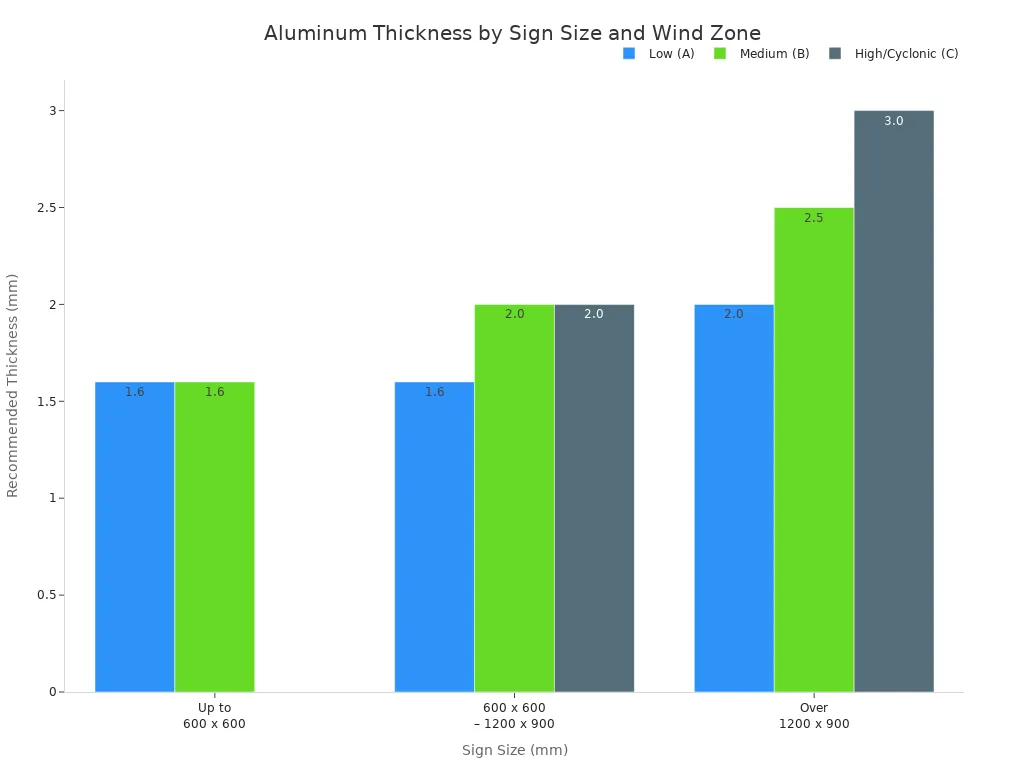
تثبيت
كيف تضع علامة تغير ما تحتاجه. يمكن أن تكون العلامات على المشاركات القوية أو الإطارات أرق. علامات في بقع مفتوحة أو شنقا الحاجة الألومنيوم أكثر سمكا. هذا يمنعهم من التحرك أو الأذى. يفكر العمال في مدى سهولة التحرك ووضع كل علامة. قد تحتاج العلامات الثقيلة إلى أدوات خاصة. علامات الضوء أسهل في حملها وتثبيتها.
نصيحة: اختر دائمًا السمك المناسب لمكان وكيف تضع العلامة.
أنظمة
تقول قواعد من الحكومة كيف يجب أن تكون العلامات السميكة. تساعد هذه القواعد في الحفاظ على علامات آمنة وقوية. معظم القواعد تريد علامات بين .063 و .125 بوصة سميكة. يعتمد السماكة الصحيحة على المكان الذي تسير فيه العلامة ومدى حجمها. اتباع هذه القواعد تبقي العلامات قانونية وآمنة. كما أنه يساعدك على تجنب الغرامات أو المشاكل.
الحضرية مقابل. الطريق السريع
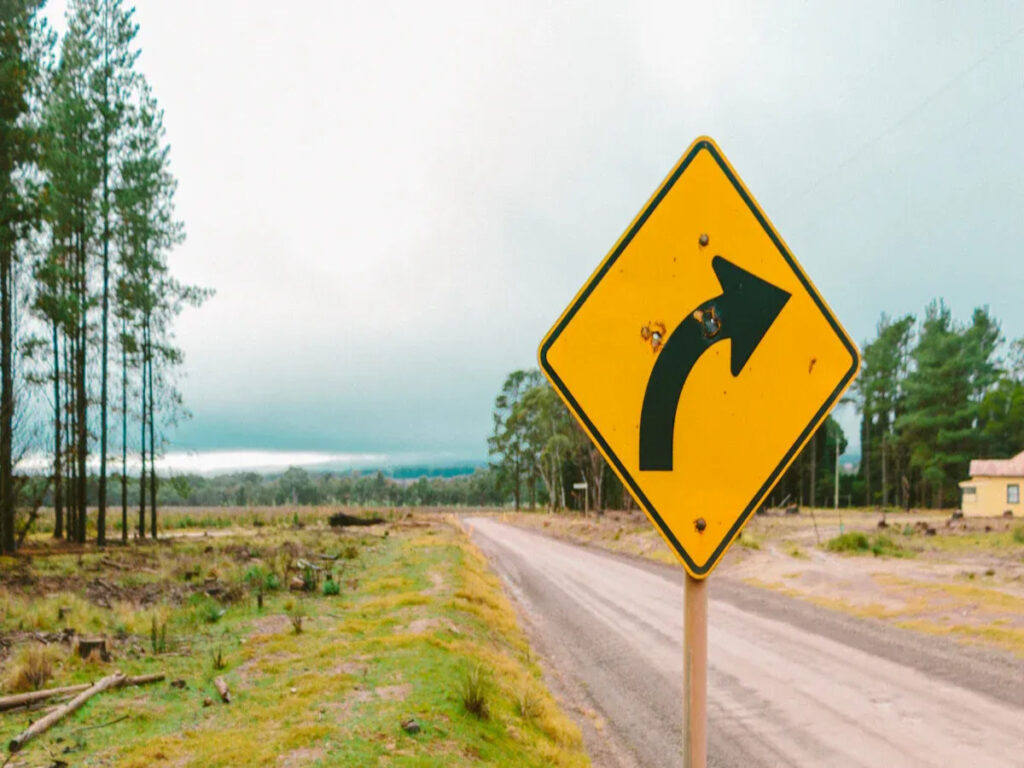
صغيرة مقابل. علامات كبيرة
تستخدم المدن علامات صغيرة ومتوسطة. تُظهر هذه العلامات أسماء الشوارع أو قواعد وقوف السيارات. بعض العلامات تساعد الناس على عبور الشارع. تستخدم معظم علامات المدينة الصغيرة 0.080 بوصة الألومنيوم. هذا السمك يبقي العلامات قاسية وسهلة رؤيتها. العلامات الكبيرة على الطرق السريعة تحتاج إلى مزيد من القوة. الطرق السريعة لها علامات دليل كبيرة وألواح تحذير. تواجه هذه العلامات رياحًا قوية وسيارات سريعة. لهؤلاء, 0.125-إن بوصة الألومنيوم يعمل بشكل أفضل. يتوقف المعدن الأكثر سمكًا إلى الانحناء ويبقي الكلمات واضحة.
نصيحة: تطابق حجم الإشارة مع السمك الأيمن. تحتاج العلامات الكبيرة.
حجم حركة المرور
مدى انشغال الطريق الذي يتغير فيه العلامات التي تحتاجها. طرق المدينة ثابتة ولكنها أبطأ حركة مرور. علامات هنا تواجه ريح أقل وأقل نتوءات. غالبًا ما تعمل لوحة 0.080 بوصة أو 0.100 بوصة بشكل جيد. الطرق السريعة لها شاحنات ثقيلة وسيارات سريعة. يجب أن تتعامل العلامات مع مزيد من القوة والطقس السيئ. لوحات أكثر سمكا مثل 0.125 بوصة تدوم لفترة أطول وتبقى قابلة للقراءة. تحتاج مناطق البناء مع الآلات الكبيرة أيضًا إلى علامات أكثر سمكا للسلامة.
- حضري: سرعات أقل, حركة مرور معتدلة, علامات أصغر, لوحات أرق.
- الطريق السريع: سرعات عالية, حركة المرور الكثيفة, علامات أكبر, لوحات أكثر سمكا.
مرجع سريع
يعتمد انتقاء السماكة اليمنى على المكان الذي تسير فيه العلامة ونوعها. يساعد الجدول أدناه المخططين على اختيار سريع:
| البيئة/نوع علامة | سماكة الألومنيوم الموصى بها | الوصف/استخدام الحالة |
|---|---|---|
| علامات داخلية | 0.040-بوصة | علامات المكتب, يعرض اللوبي, من السهل الشنق |
| علامات في الهواء الطلق (عام) | 0.063-بوصة | الاستخدام العادي في الهواء الطلق, متانة متوازنة |
| علامات في الهواء الطلق (مناطق عاصفة/صعبة) | 0.080-0.125 بوصة | الشقوق, يقاوم الرياح والطقس القاسي |
| علامات المرور (سكني/وقوف السيارات) | 0.080-بوصة | يجتمع DOT للمناطق ذات الحركة المنخفضة |
| علامات المرور (الطرق الحضرية) | 0.100-بوصة | مناسبة لحركة المرور المعتدلة |
| علامات المرور (الطرق السريعة/حركة المرور الكثيفة) | 0.125-بوصة | متوافق تمامًا مع DOT, أعلى المتانة |
| مناطق الصناعية/البناء | 0.125-بوصة | الشقوق, يقاوم الانحناء والتأثير |

ملحوظة: تحقق دائما المحلية قواعد النقطة قبل شراء العلامات. يمكن أن تساعدك عينات الاختبار في اختيار أفضل المواد لمشروعك.
نصائح القرار
تحقق اللوائح
يجب على مخططو المرور والمهندسين النظر في القواعد المحلية والاتحادية. يمكن أن يكون لكل ولاية ومدينة معايير مختلفة ل علامات حركة الألمنيوم. تتأكد هذه القواعد من أن العلامات آمنة وسهلة رؤيتها. يساعد التحقق من القواعد أولاً في تجنب الأخطاء والحفاظ على المشاريع قانونية.
نصيحة: تحقق دائمًا من الحد الأدنى للسماكة التي تحتاجها قبل شراء المواد.
التكلفة مقابل. طول العمر
إن اختيار السمك المناسب يعني التفكير فيه التكلفة وكم من العلامات تستمر. تكلف الألواح الأكثر سمكا أكثر ولكن تدوم لفترة أطول, لذلك لا تحل محلهم كثيرًا. للوظائف العامة, يجب أن ينظر المخططون إلى كلا من سعر البداية والوقت الذي ستعمل فيه العلامات. يوضح الجدول أدناه كيف تتغير الأنواع والسماكة المدة التي تستغرقها العلامات:
| نوع الألومنيوم | سماكة (بوصة/مم) | المتوقع المتوقع في الهواء الطلق | ملحوظات |
|---|---|---|---|
| المينا الأبيض الألومنيوم | 0.032″ (0.81 مم) | الاستخدام الداخلي فقط | أرق, أقل دائمة |
| المينا الأسود الألومنيوم | 0.040″ (1.016 مم) | 5+ سنين | أكثر سمكا, متانة في الهواء الطلق ممتازة |
| المينا الأبيض الألومنيوم + UV Overlaminate | 0.033″ (0.84 مم) | 5+ سنين | إضافة حماية الأشعة فوق البنفسجية تحسن طول العمر |
يجب ألا يختار المخططون لوحات سميكة جدًا, أو يكلف الكثير. إذا كانت اللوحات رقيقة جدًا, علامات تبلى بسرعة وتكلف المزيد لاحقًا. اختيار الصف الأيمن والسماكة ل علامات حركة الألمنيوم يعطي أفضل قيمة لكل وظيفة.
العوامل البيئية
يغير الطقس والظروف الأخرى مدى نجاح علامات العمل. يمكن أن يصنع الملح بالقرب من المحيط علامات حركة الألمنيوم الصدأ ولا يدوم لفترة طويلة. ارتفاع درجة الحموضة أو المواد الكيميائية يمكن أن تؤذي الألواح, خاصة في المصانع. نوع السبائك يهم لأن بعض الأنواع تحارب الصدأ بشكل أفضل.
ملحوظة: في أماكن مع سوء الاحوال الجوية أو المواد الكيميائية, يجب على المخططين استخدام الألواح والسبائك الأكثر كثافة التي لا تصدأ لجعل العلامات تدوم لفترة أطول.
يجب أن ينظر المخططون إلى الطقس, الشركات القريبة, ونوع الطريق قبل الاختيار. هذا يساعد كل علامة على البقاء آمنة وسهلة رؤيتها لفترة طويلة.
إن اختيار السماكة المناسبة لعلامات حركة الألمنيوم يبقي الناس آمنين ويجعل العلامات تدوم لفترة أطول. كما أنه يساعد على اتباع القواعد. يقول الخبراء إن بعض الأشياء مهمة للغاية:
- لوحات سميكة مثل 0.125 بوصة هي الأفضل للطرق السريعة والأماكن ذات الخطر الأكبر.
- في المدن والأحياء, 0.080-لوحات بوصة أو 0.100 بوصة جيدة. هذه أسهل في طرحها وتوفير المال.
- تحقق دائمًا مما إذا كان للمورد الشهادات الصحيحة ويتبع قواعد مثل MUTCD و ISO9001.
لاتخاذ الخيار الأفضل, يجب على المخططين التحدث إلى الخبراء والشراء من الموردين الموثوق بهم قبل اتخاذ قرار.
التعليمات
ما السمك الذي تتطلبه النقطة لعلامات حركة الطرق السريعة?
تريد وزارة النقل أن تكون علامات الطرق السريعة 0.125 بوصة سميكة. يساعد هذا السماكة علامات على الوقوف على الريح والطقس. كما أنه يحميهم من السيارات التي تضربهم. انظر دائمًا إلى قواعد DOT المحلية قبل شراء العلامات.
هل يمكن للمدن استخدام علامات الألومنيوم الأرق للطرق الحضرية?
نعم. تختار العديد من المدن 0.080 بوصة الألومنيوم لعلامات الشوارع ومواقف السيارات. هذا السمك قوي بما يكفي لمعظم طرق المدينة. كما أنه يساعد المدن على توفير المال. قد تحتاج الزوايا المزدحمة إلى ألواح أكثر سمكًا لتستمر لفترة أطول.
كيف تؤثر سمك الإشارة على التثبيت?
العلامات الأكثر سمكا أثقل وتحتاج إلى وظائف أقوى. قد يحتاج العمال إلى أدوات خاصة للعلامات الثقيلة. العلامات الرقيقة أخف وزنا وأسهل وضعها. هذا يجعل تثبيتها أسرع وأبسط.
هل علامات الألومنيوم أكثر سمكا أفضل للمناطق الريفية?
نعم. لوحات أكثر سمكا 0.125 بوصة تعمل بشكل أفضل في أماكن عاصفة. لا ينحنيون بسهولة ويظلون سهلين لرؤيته في العواصف. غالبًا ما يختار المهندسون علامات أكثر سمكا للجسور, الطرق السريعة, أو بالقرب من المحيط.
هل تحتاج جميع علامات حركة الألمنيوم إلى طلاء عاكس?
معظم علامات المرور في الهواء الطلق لها طلاء عاكسة. تساعد هذه الطلاءات السائقين على رؤية علامات في الليل وفي الطقس السيئ. غالبًا ما تقول القواعد الفيدرالية والقواعد الحكومية أن العلامات يجب أن يكون لها أغطية عاكسة. تحقق دائمًا من أن الطلاء يطابق القواعد المحلية.

